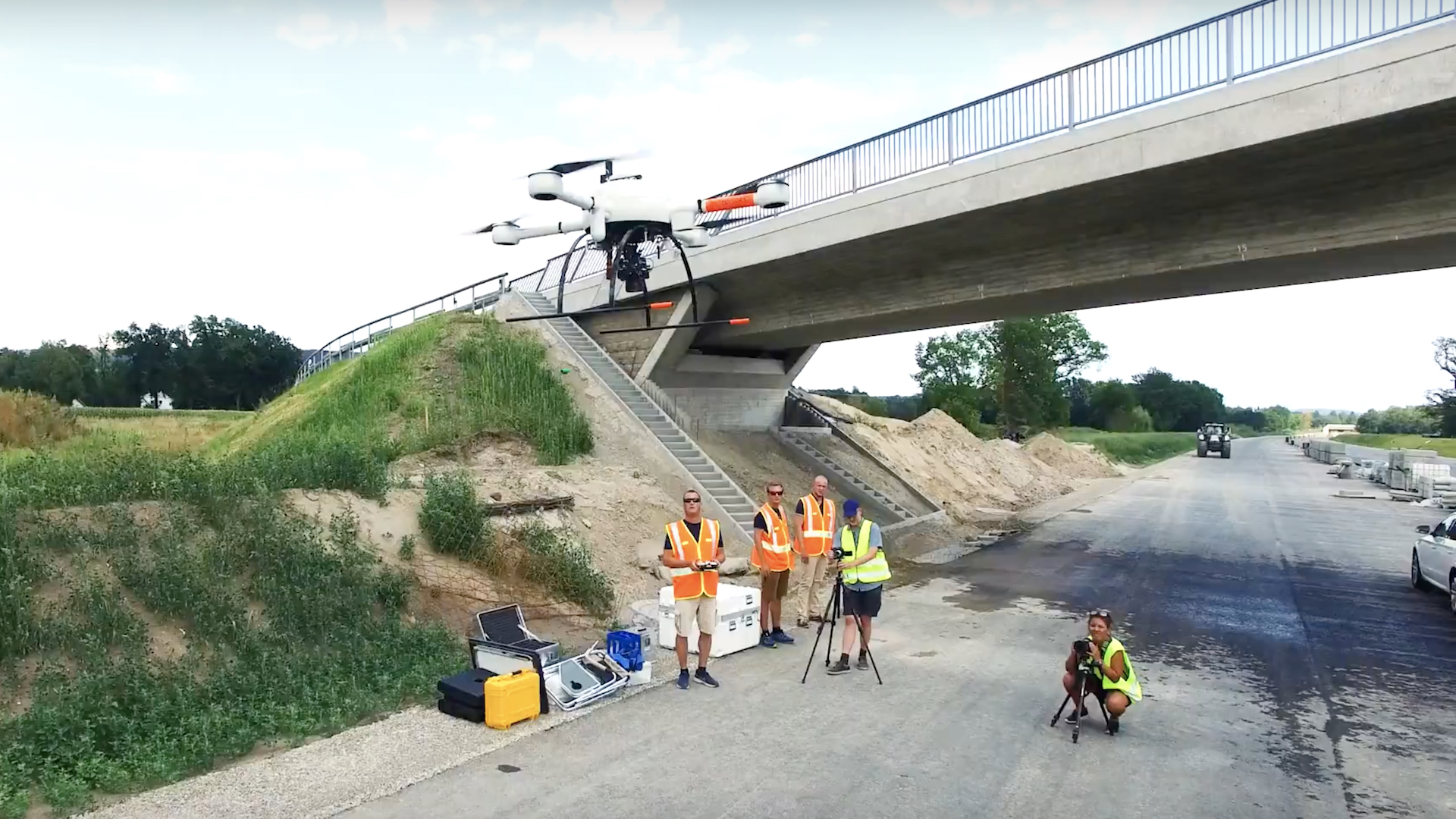

German construction giant Strabag just flew drones beyond the visual line of sight (BVLOS) above the Autobahn in Halle, Germany to aerially map the air corridor along the highway using UAV company Microdrones’ mdMapper1000DG surveying software, according to the Microdrones press release.
BVLOS flights in Germany are authorized and conducted more easily than in the U.S., due to the relationship between the country’s national air traffic control and Germany’s ubiquitous Deutsche Telekom cellular provider. By connecting the Microdrones UAVs with LTE modems, the nation’s aviation agency can easily locate, track, and monitor the drones and thereby ensure fairly safe operations.
In Europe, aerial inspections of utilities are increasingly popular. Most recently, state agency Transport Infrastructure Ireland, which oversees nearly 800 miles of roads, began implementing UAVs to aerially assess the integrity of the country’s ground-based infrastructure.
While Colorado-based Xcel Energy became the first utility company in the U.S. to garner FAA approval to conduct BVLOS flights to aerial inspect infrastructure earlier this month, the corporate-government-telecom relationship in Germany is seemingly far more well-prepared to rapidly authorize and conduct drone operations of this kind than the American counterpart.

While the FAA and select UAS Integration Pilot Program participants have, admittedly, begun ramping up the pace in terms of corporate BVLOS drone operations in 10 select territories, the required safety and operations standards seem to already be functionally in place in Germany. It is the cohesion between Germany’s largest cellular provider and its LTE network, the state’s unmanned air traffic management (UTM) system, and established corporate entities that provide each party with enough safety measures, oversight, and confidence to conduct these missions.
As you can see in the video below, Strabag flew a fleet of drones above the A33 Highway in Halle, Germany, creating a point cloud and an orthophoto of 7.5 miles (12 kilometers) of the Autobahn.
What this means in practical terms is that the collected data can be processed to create highly accurate digital visualizations called orthomosaics which in turn forego the need for manual inspection which would endanger workers.

In other words, by using unmanned tech, specialized software, and conducting these missions with each involved party being on the same page, efficiency is increased and risk is reduced. This simple all-encompassing solution, albeit highly complex in its programming and computer processing, allows companies and their employees to analyze infrastructure remotely with the same kind of accuracy while foregoing all the conventional danger traditionally involved. Let’s take a look at the end results of the aerial mapping in Halle, shall we?

With Germany’s air traffic controller providing the UTM, Deutsche Telekom’s cellular networks allowing for precise location data, and Microdrones’ mdMapper technology doing the actual mapping work, this system gives those who need it an accurate visualization of the Autobahn and its pavement imperfections and safety hazards, all without putting people in danger.